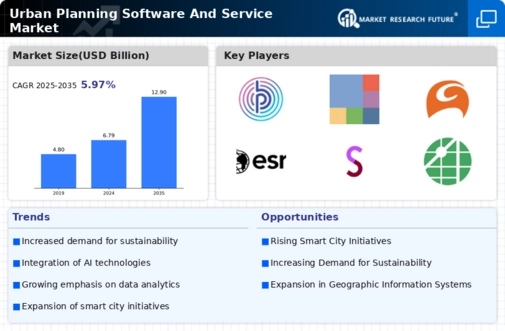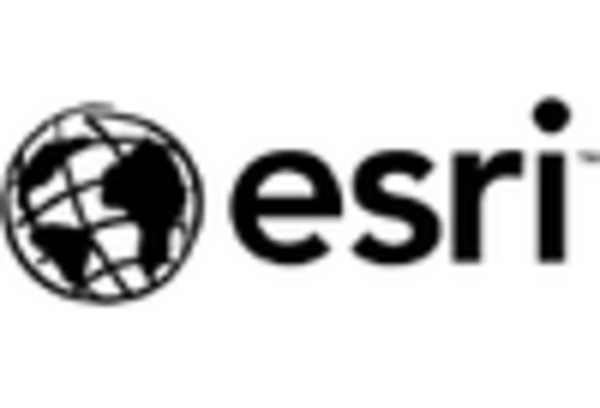Rising Urbanization
The increasing trend of urbanization is a primary driver for the Urban Planning Software And Service Market. As more individuals migrate to urban areas, cities face challenges related to infrastructure, housing, and transportation. This surge in population density necessitates efficient urban planning solutions to manage resources effectively. According to recent data, urban areas are expected to house approximately 68 percent of the world's population by 2050. This demographic shift compels city planners and local governments to adopt advanced software solutions that facilitate better decision-making and resource allocation. Consequently, the demand for urban planning software and services is likely to grow, as stakeholders seek to create sustainable and livable urban environments.
Integration of Smart Technologies
The integration of smart technologies into urban planning processes is a significant driver for the Urban Planning Software And Service Market. Innovations such as the Internet of Things (IoT), artificial intelligence (AI), and machine learning are transforming how cities are designed and managed. These technologies facilitate real-time monitoring and predictive analytics, allowing urban planners to respond proactively to emerging challenges. For example, smart traffic management systems can optimize traffic flow and reduce congestion, enhancing urban mobility. As cities increasingly adopt smart technologies, the demand for urban planning software that can integrate these solutions is expected to rise, fostering a more efficient urban environment.
Government Initiatives and Funding
Government initiatives aimed at enhancing urban infrastructure and services significantly influence the Urban Planning Software And Service Market. Various governments are increasingly investing in smart city projects, which often require sophisticated planning tools. For instance, funding for urban development projects has seen a notable increase, with many countries allocating substantial budgets to improve public services and infrastructure. This financial support encourages the adoption of urban planning software, as municipalities strive to meet regulatory requirements and improve citizen engagement. The integration of technology in urban planning processes is likely to enhance efficiency and transparency, further driving the market's growth.
Focus on Data-Driven Decision Making
The emphasis on data-driven decision-making is reshaping the Urban Planning Software And Service Market. As cities generate vast amounts of data from various sources, including sensors and social media, urban planners are increasingly relying on analytics to inform their strategies. This trend is evident in the growing adoption of Geographic Information Systems (GIS) and other analytical tools that enable planners to visualize and interpret complex data sets. The market for GIS software alone is projected to reach USD 14 billion by 2026, indicating a robust demand for data-centric urban planning solutions. By leveraging data analytics, urban planners can make informed decisions that enhance urban resilience and sustainability.
Increased Public Awareness and Engagement
The growing public awareness regarding urban issues and the importance of community engagement is driving the Urban Planning Software And Service Market. Citizens are becoming more involved in the planning process, advocating for transparency and inclusivity in decision-making. This shift has prompted urban planners to seek software solutions that facilitate public participation, such as online platforms for feedback and collaboration. The rise of participatory planning approaches is likely to enhance the effectiveness of urban development projects, as they incorporate diverse perspectives and needs. Consequently, the demand for urban planning software that supports stakeholder engagement is expected to grow, reflecting the evolving landscape of urban governance.


















Leave a Comment